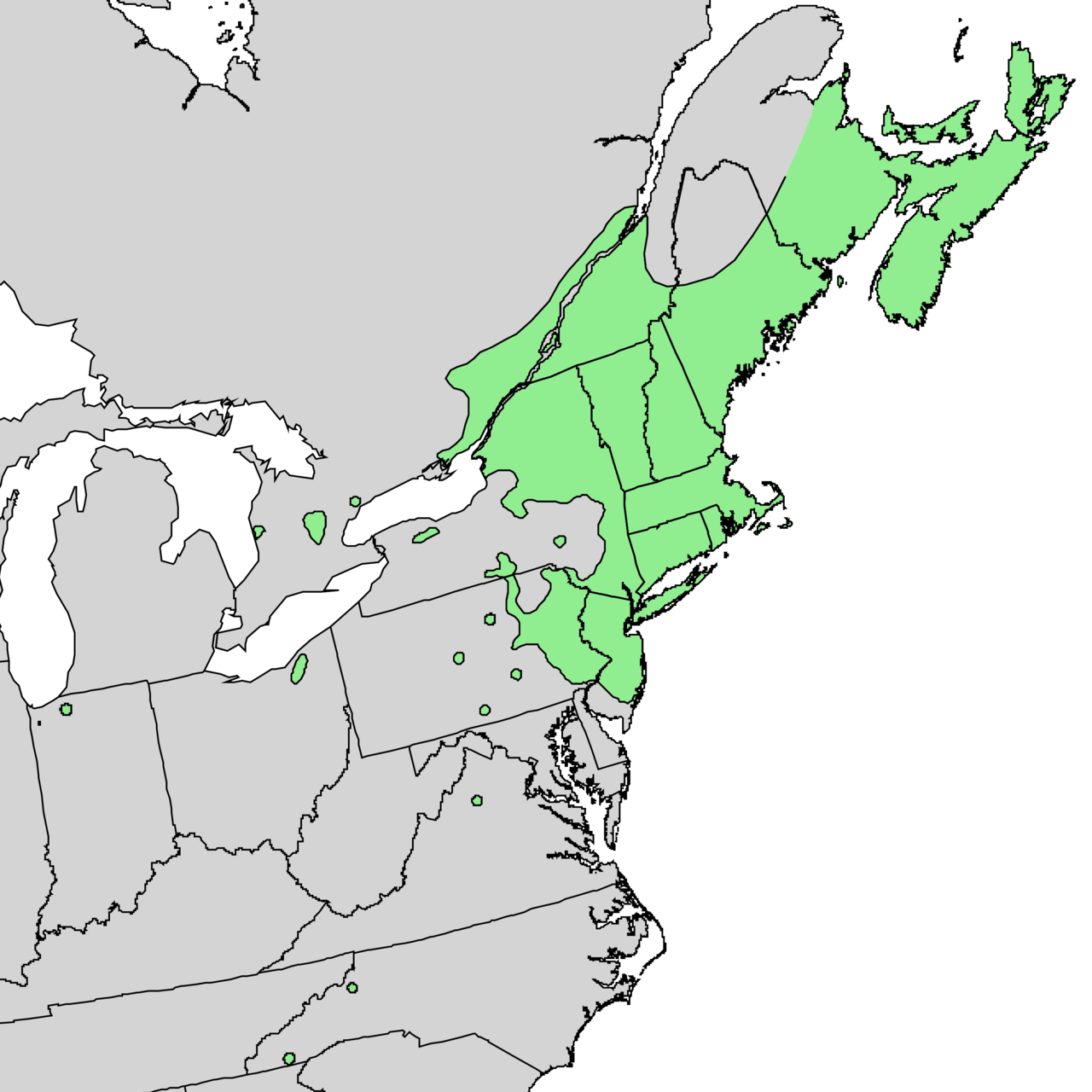Gray Birch
Betula populifolia Marshall
Description
Gray birch (birch family, Betulaceae) is a deciduous, fast-growing (2 to 5 feet per year 4) tree that grows to 40 feet, often with several trunks.¹ It has white bark a with dark, inverted Vs below the branches. ¹ The bark does not readily peel in horizontal strips. The alternate leaves are triangular with long tips, 1.5 to 3 inches long with two sizes of teeth on the margin, and 6 to 9 pairs of veins ending in the large teeth. ¹ The leaf petioles are somewhat flattened9. Twigs are rough warty. ³ Male and female flowers are on the same plant. ³ Yellowish male flowers are in catkins 1.5 inches long and female flowers are green in upright catkins 0.5 inches long. ³ The fruits are small cone-like structures. ³

Bark of gray birch. @ Courtesy of Morton Arboretum9

Leaves of gray birch. @ D. Cameron 2005, Go Botany 8

Fruit of gray birch. @ Courtesy of Morton Arboretum9
Distribution
Gray birch extends from Southeastern Canada to Virginia and is scattered west to Illinois. ³ It prefers growth in cool regions where summer temperatures are 75 F and snow covers the ground throughout the winter. ³ In Maryland gray birch is listed as S1 (highly state rare) and may have been introduced. Records show its presence in Garrett, Allegany, Baltimore, Howard, Cecil and Kent counties. ²

Native distribution of gray birch. Wikimedia Commons 5
Wildlife Importance
Seed-eating birds such as the American Goldfinch, Pine Siskin and Black-capped Chickadee feed heavily on gray birch. 4,7 Ruffed Grouse and White-tailed Deer feed on twigs and buds. 7 Beavers feed on the bark and wood. 7 Many insects use the leaves, fruits and wood for nourishment. 7 Caterpillars of the Morning Cloak and Compton Tortoiseshell butterfly use gray birch. 7
Economic Importance
The wood of gray birch is soft but can buy used to make toothpicks, clothes pins and spools. 6 It can also be used for making paper. 6
Threats
The bronze birch borer can weaken the tree and the birch leaf miner can also affect gray birch. ³ It is intolerant of fire, but quickly recolonizes burned areas. 4
Interesting Facts
- Gray birch is frequently planted on mine spoils which is expanding its range. 7
References
- Oregon State University Landscape Plants: Betula populifolia
- Maryland Biodiversity Project: Gray birch
- Missouri Botanical Garden: Betula populifolia
- USDA NRCS Plant Fact Sheet: Gray birch
- Wikimedia Commons: Betula distribution maps of North America
- Illinois Wildflowers: Gray birch
- plant.org: Gray birch
- Go Botany: Betula populifolia
- Morton Arboretum: Betula populifolia
Contributed by J. Hull
